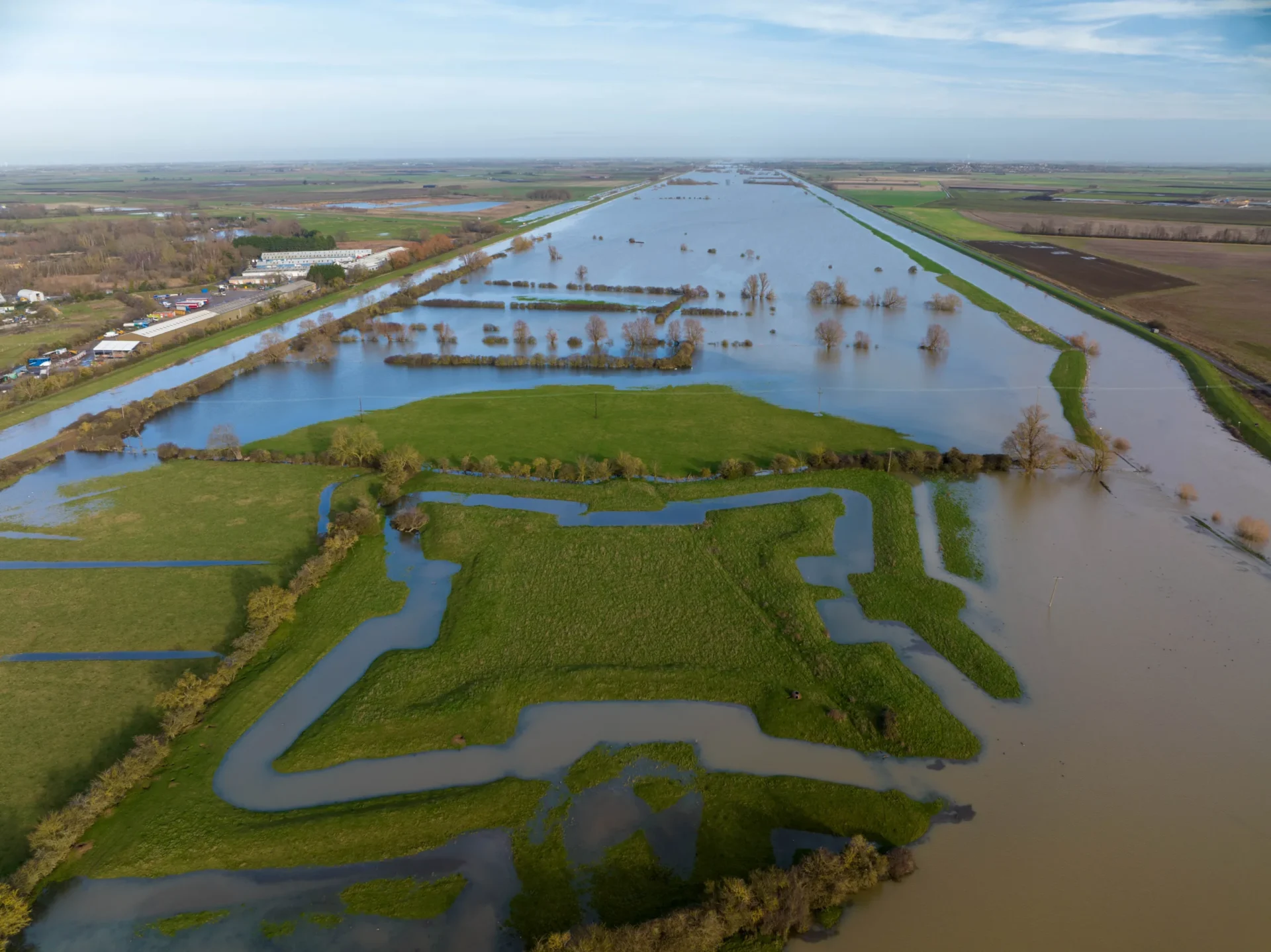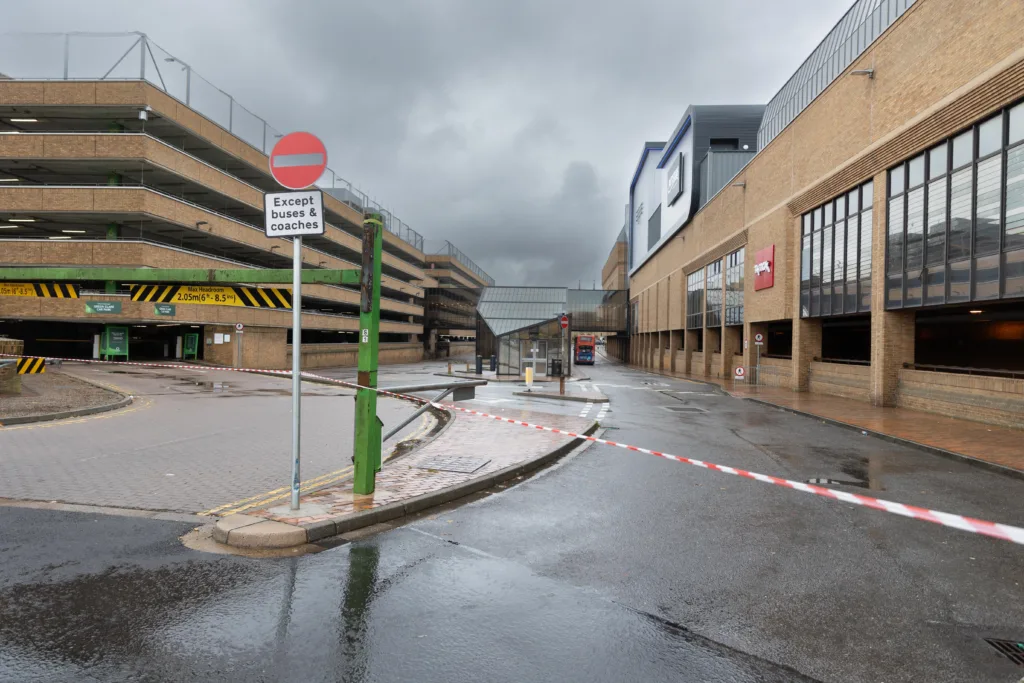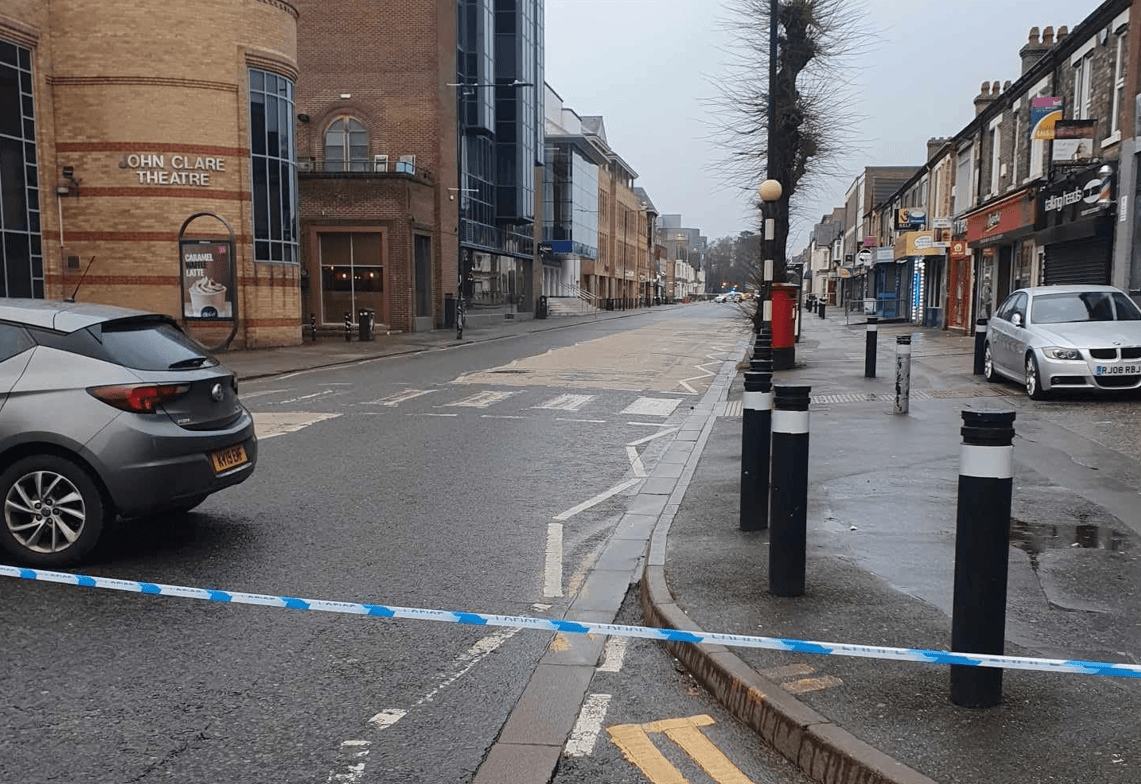The clear outline of a 400-year-old English Civil War fort has been highlighted after heavy rain and flooding filled a moat around the earthworks following Storm Henk. Aerial photos show The Earith Bulwark in the Cambridgeshire Fens, which was built around 1643 by Oliver Cromwell’s forces to protect crossing points on the local rivers, including the River Great Ouse.
The fort, which is only revealed very rarely and after extreme flooding, is described by Historic England as “amongst the most elaborate fortifications” from the Civil War (1642-51) and it covers about 60 square metres with bastions at each of the four corners.
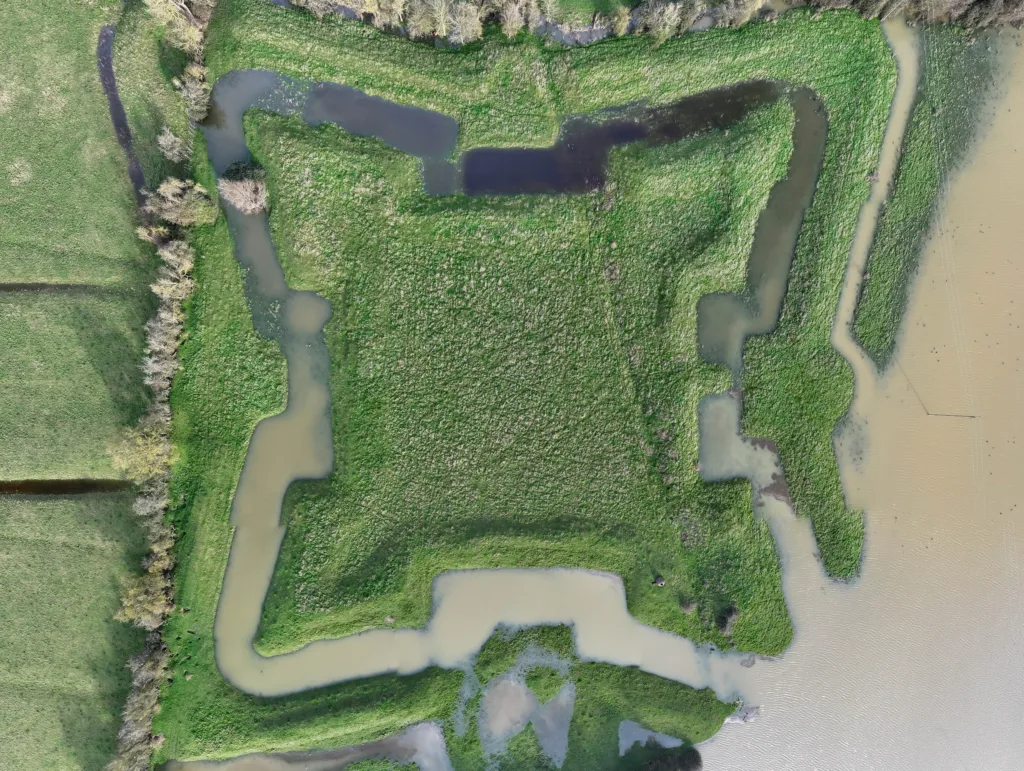
The Earith Bulwark was built on a narrow strip of land known as the Hundred Foot Washes by Parliamentary forces to protect the bridge where the Huntingdon to Ely road crosses the river.
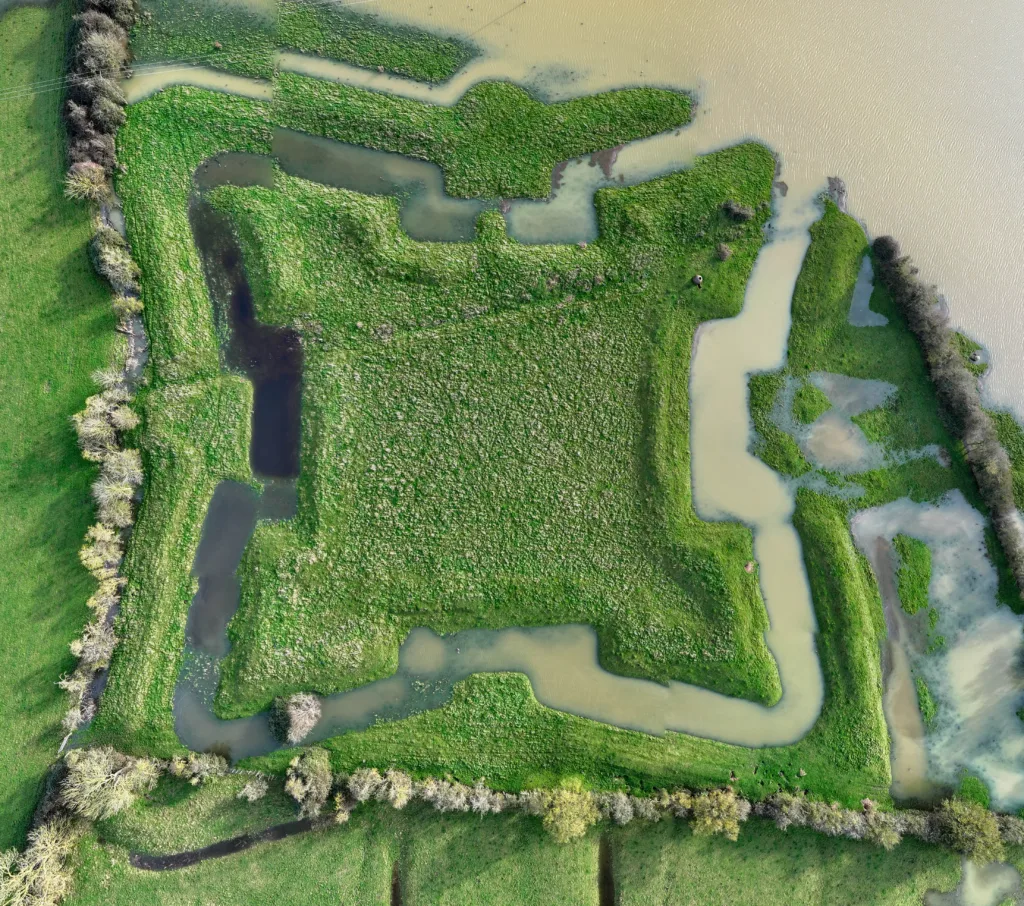
It was strategically placed to command an important river crossing at the western end of the fen causeway which linked Huntingdon to the Isle of Ely, according to Historic England.
The Bulwark is believed to be the work of two English engineers, Richard Clamp and Captain John Hopes, although the design is largely based on the Dutch school of military fortification.
The central enclosure is raised about 0.7 metres above the surrounding ground level and measures approximately 60 metres square.
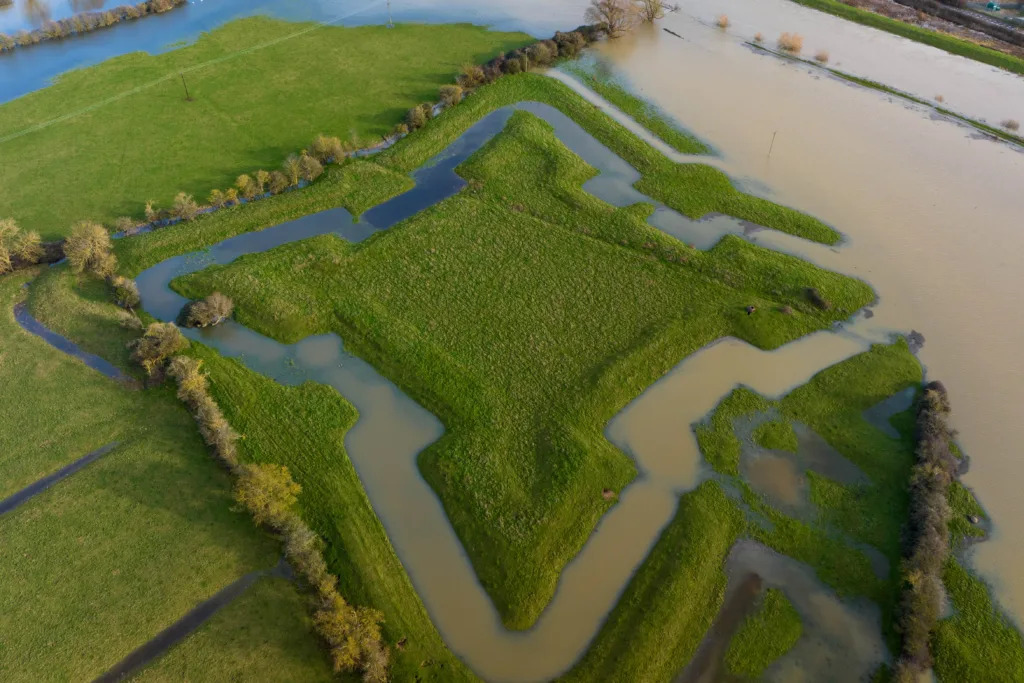
The enclosure is surrounded by an earthen rampart and parapet, which varies between 0.5 metres and one metre in height, and between four metres and 10 metres in width.
The parapet would originally have had a near vertical inner face supported by timber work and pierced by gun loops but has since subsided to a rounded profile.
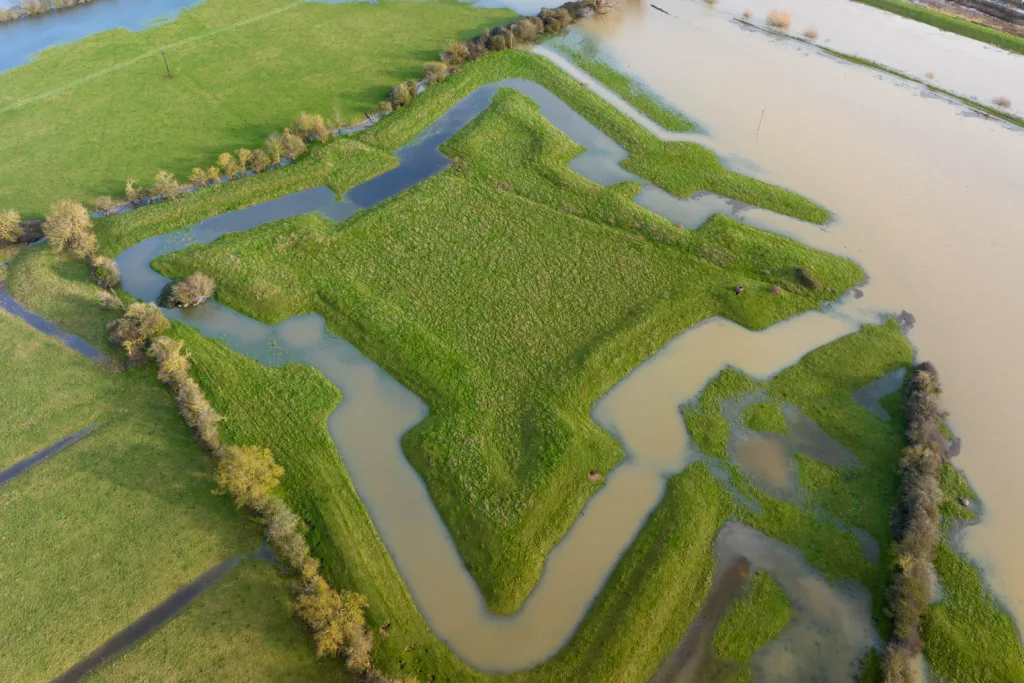
Picture by Terry Harris.
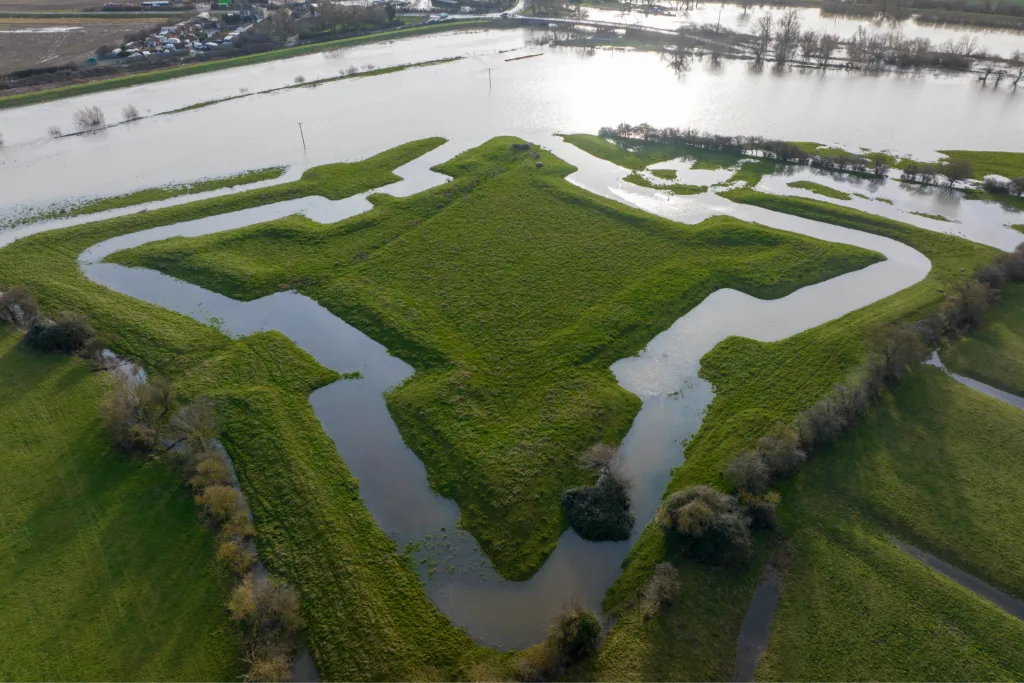
It continues around each of the four, lozenge-shaped bastions which form diagonal projections at the north, south, east, and west corners, with a single gap or entrance in the centre of the south east side.
The bastions each extend for about 30 metres and measure approximately 20 metres across the widest parts.
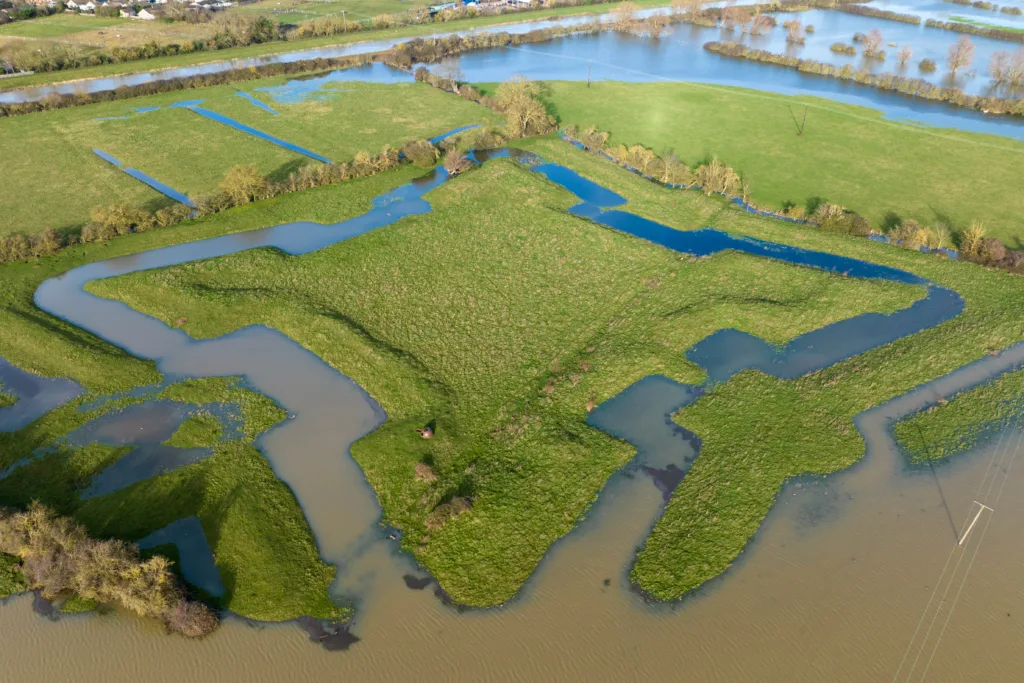
Aerial photos show The Earith Bulwark in the Cambridgeshire Fens, which was built around 1643 by Oliver Cromwell’s forces to protect crossing points on the local rivers, including the River Great Ouse.
Picture by Terry Harris.
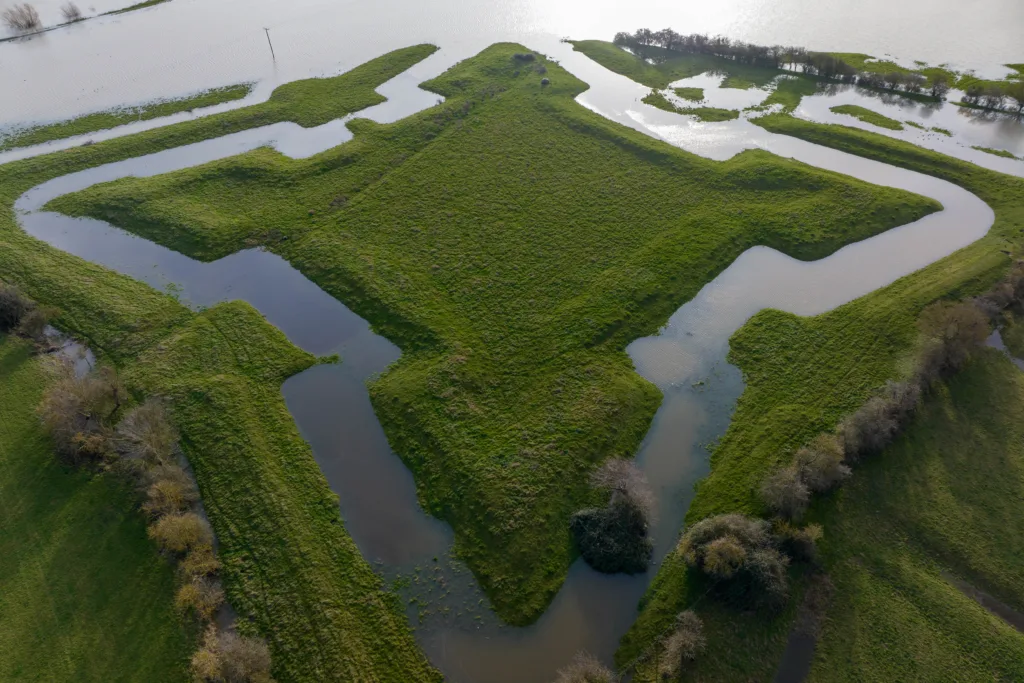
Aerial photos show The Earith Bulwark in the Cambridgeshire Fens, which was built around 1643 by Oliver Cromwell’s forces to protect crossing points on the local rivers, including the River Great Ouse. Thursday 04 January 2024.
Picture by Terry Harris.
These served as artillery platforms with a wide range of fire and allowed close quarter defence for the ramparts to either side.


